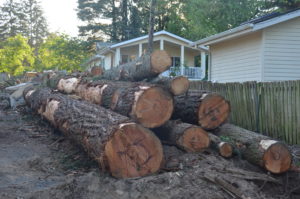The Seattle Urban Forestry Commission made the following recommendations to King County regarding it’s 30-year Forest Plan. You can see the original letter here.
March 11, 2020
Christie True, Department of Natural Resources and Parks Director
King Street Center, 201 S Jackson St
Seattle, WA 98104-3855
Dear Director True,
The Seattle Urban Forestry Commission (UFC) thanks Sarah Brandt for her updates regarding King County’s 30-year Forest Plan. The UFC supports this undertaking on a county level because of the complexity and interaction of the many different land uses and environmental issues involving forestry across the county.
King County is well-positioned to coordinate and share best practices and planning across the county by bringing together the many diverse stakeholders that benefit from and are impacted by decisions affecting our forested landscape. Seattle and other cities in King County have overlapping interests in maintaining, protecting, and
enhancing the benefits that urban forests provide to their dwellers. The following suggestions for the County may help municipalities better manage environmental concerns relating to forestry.
Assist Collection of High-Quality Tree Canopy Cover Data across the County
Without good data on trees and canopy cover, municipalities manage urban forests in the dark. The UFC suggests that King County could assist in periodic LIDAR studies to measure canopy cover across the county to provide baseline data for all cities, towns, and unincorporated areas in the county. Importantly, these studies
should be repeated at least every five years. These data will allow decision makers to assess gains and losses in tree canopy over time.
The UFC recommends that these studies measure canopy volume in addition to canopy cover. King County is losing large trees, especially in cities. Replanting with small trees may give a similar canopy area over time but does not fully replace the benefits large trees provide particularly well, including carbon sequestration,
stormwater mitigation, air quality improvement, wildlife support, and heat island impacts reduction. A LIDAR study can also help to clarify forest species diversity by doing a leaf off study to determine the percentage of evergreen and conifer species in an area.
Consider Cumulative and Ecosystem Level Impacts
Sharing information on climate impacts to trees and forests and ensuring species diversity and resilience is important. Looking at the total ecosystem impacts must be considered. Forestry is more than just trees. It includes associated plants, shrubs, and wildlife. The totality, interrelationships and functionality of forests, both
rural and urban, must be considered as the region grows in population.
Take Stock of and Value King County’s Natural Capital
Seattle is starting a Natural Capital Assessment to assign dollar values to its natural features and the benefits they provide. King County should consider a similar assessment as part of its forestry plan.
Convene Stakeholders, Leverage Partnerships, and Share Resources
Another way that King County can assist urban areas is by working with entities like the Washington State Department of Natural Resources’ Urban and Community Forestry Program, the US Forest Service’s Urban and Community Forestry Program, and King Conservation District in organizing workshops for municipalities to develop effective tree and urban forest ordinances and management plans. Convening stakeholders to discuss challenges and opportunities would greatly benefit the County in implementing an effective forest plan. By leveraging partnerships and sharing resources, cities across the county can manage urban forests in a regionally
coordinated manner and improve on efforts from work done in other areas.
The UFC also urges King County to make efforts to include other entities in its outreach and future involvement. These include dealing with Washington state entities like the Washington State Department of Transportation and the Washington State Department of Ecology as well as Federal Agencies that own land in King County.
Other important entities to include is exploring ways to involve school districts and students in efforts to protect and increase forests. These will be their forests in the future.
Consider a County-level Urban Forestry Advisory Board
King County has already created a Rural Forestry Commission. There is a need for a similar board for urban areas. Multiple tree and urban forest protection ordinances and management plans exist across the county. Each municipality has its own process for drafting and updating these ordinances and plans. While the basic issues are similar, cities act independently and frequently lack the resources and expertise to evaluate the benefits or problems associated with different ways of regulating tree and forest protection. The County could help coordinate efforts.
Thank you for your outreach and efforts to create a 30-year Forest Plan for King County. The UFC supports your efforts and looks forward to working with you.
Sincerely,
Weston Brinley, Chair; Steve Zemke
cc: Mayor Jenny A. Durkan, Council President Lorena González, CM Lisa Herbold, CM Debora Juarez, CM Andrew Lewis, CM Tammy Morales, CM Teresa Mosqueda, CM Alex Pedersen, CM Kshama Sawant, CM Dan Strauss, Jessica Finn Coven, Michelle Caulfield, Josh Baldi, Warren Jimenez, Sarah Brandt, Jessica Engel, Kathleen Farley Wolf, Paúl Quiñonez Figueroa
Sandra Pinto de Bader, Urban Forestry Commission Coordinator
City of Seattle, Office of Sustainability & Environment
PO Box 94729 Seattle, WA 98124-4729 Tel: 206-684-3194 Fax: 206-684-3013
www.seattle.gov/UrbanForestryCommission




